
Equestrian - Quick Guide
Equestrian - Overview
Equestrian is a citation to horseback riding. It is derived from Latin words equester and equus which means horse. This sport is played as solo and also in teams. It is a combination of three different events namely Endurance, Jumping, and Dressage.
Endurance − The endurance discipline checks the riders talent on horseback along with the fitness and potential of the horse.
Jumping − The jumping discipline checks the riders talent to make their horse jump over barriers on command.
Dressage − Dressage is the third discipline which is commonly known as horse ballet.
Equestrian checks the riders talent to coordinate with the horse to perform a set of moves. In this discipline, the horses form and willingness to perform with minimum pushing from its rider is judged.
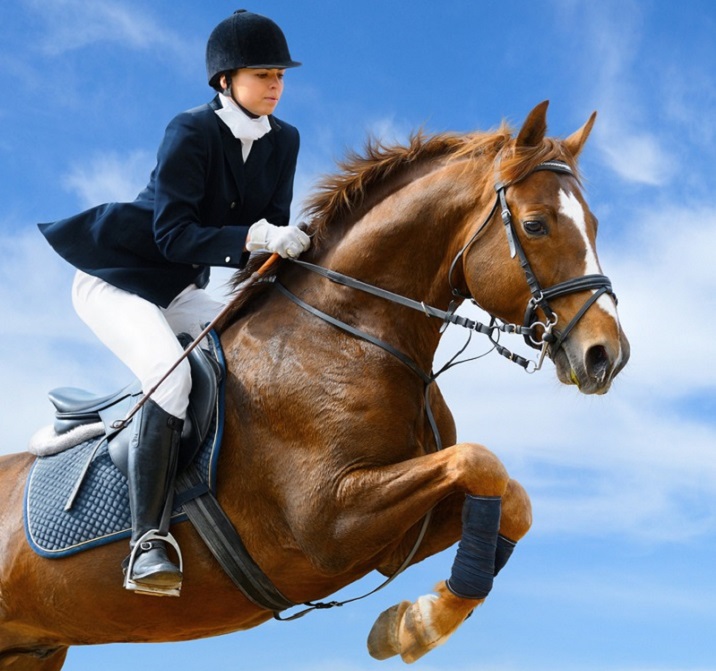
Equestrian is an interesting sport which is completely based on riders equation with horse.
The sport includes three different events whose objective is a bit different from others. In the Endurance event, the main objective is to finish the course with shortest time. The riders who complete the course in minimum time are ranked higher.
In the jumping event, the aim is to finish the session with minimal time without knocking over or missing any barrier, deviating from sequence of the session, and exceeding the time limit.
In the dressage discipline, the horses form and willingness to perform along with the riders relaxed and in control behaviour is judged. The riders with the best scores qualify from the team event to the individual event.
A Brief History of Equestrian
Equestrian was first presented at the Games of the II Olympiad held in Paris in the year 1900. Although, it was not included for the next two editions of the competition but it was again seen in 1912 and has always remained a part of Summer Sports Olympics.
Up to 1948, only men were allowed to participate in this sport. The year 1952 witnessed active participation of women in this sport in Games of XV Olympiad held in Helsinki. Firstly, they only compete in dressage but slowly as the time passed, they started participating in other events too.
Participating Countries
The Federation Equestre Internationale (FEI) administers the FEI World Equestrian Games for international championships in equestrian. The championships take place once after every four years. The place of the championships alters within different countries. In the 2010 Summer Olympic Games, 800 people along with their horses represented 57 countries.
Given below is the list of countries where recent five Equestrian championships were held.
- 2014: Normandy, France
- 2010: Lexington, US
- 2006: Aachen, Germany
- 2002: Jerez de la Frontera, Spain
- 1998: Rome, Italy, Argentina
Equestrian - Disciplines
Equestrian consists of three disciplines − the Endurance, the Jumping, and the Dressage. Each discipline has both individual as well as team events.
Endurance
In this discipline, the riders abilities on the horseback along with fitness, potential, and stamina is tested. For each round, a time limit is set for some distance with weight divisions, so that no rider has any advantage. For the team event, each group includes four riders and ranking is done on the basis of the team which first completes the round.

The tracks here are cross-country. It comprises of both natural and some artificial barriers like hills, ditches or edges. The rider who manages to cross all the barriers in the round in minimum time is ranked higher. There are awards for the horse which crosses the finish line in better condition as compared to other horses.
Jumping
In this discipline, the riders skill to coordinate with the horse along with the horses skills to jump over the barriers as per the riders command is tested. This discipline has over eight to twelve obstacles which include ditches, low walls and parallel bars.

The duo i.e. rider and the horse who completes the round with fewest penalties and in minimum time are the winners.
Penalty Points
In case if the riders horse is not willing to cross an obstacle and complete the round then time faults (one per second) are awarded as penalty points. Any violation will lead in penalties and deduction of points from the final scores.
Here riders have to wisely make a pass as they have to make two passes and the one with highest score will be directly promoted to finals. The rider and the horse with shortest time wins but in case of a tie, the rider has to perform an additional pass to break the tie.
The aim here is to finish the round in the shortest time without knocking over or missing any barrier or deviating from the round sequence. Only four riders can play in teams and the one with lowest score has to leave the sport. Finally the team which performs best in the shortest time is crowned as the winning team.
Dressage
This discipline is also referred as the horse ballet as the riders and their horses are judged for their accuracy of movement, calmness, suppleness, and flexibility by five judges. Here the horse's form and its enthusiasm to perform each element with minimum inciting and motivation from the rider is judged.
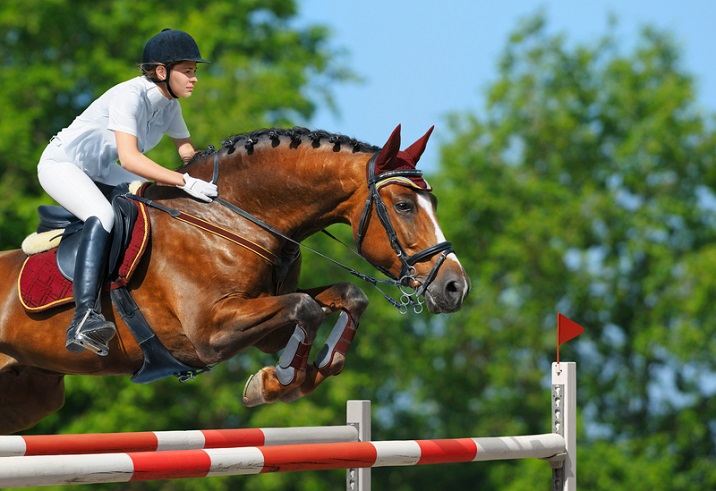
Track
Dressage round is held in a 60 X 20m sand based area where the horses have to perform some sequence of movements. The movements for the first two rounds are compulsory while the third round is the free style round. In the third round, the rider chooses an individual program that is set to music.
It is advised that the rider remains relaxed and in control. On the basis of the above mentioned criteria, judges award points to each rider from 0 - 10 for each element performed and finally the rider with the highest score wins.
Team
The team event is held first for Dressage. Four riders make a team and the one with the lowest score has to leave the sport before the total is added together. Eventually the team with the highest score wins and the riders with the best scores for the team event qualify for the individual event.
Equestrian - Equipment
Equestrian is a sport of horse riding in which the riders take part in any of the three disciplines. Horse riding is a dangerous game because if a rider falls from the horse due to his mistake or some other reason, he may get hurt. The rider also needs comfort while sitting on the horse so that he can easily mount on it and ride it. SO he needs comfort and safety equipment.
In this chapter, we will discuss about the equipment used in Equestrian.
Saddle
Any saddle that fits the horse and do not restrict its movement is good to go. Breast collars can also be used to ensure that the saddle stays in its place in rough terrain.
Head Gear
It is a clothing element which every rider is bound to wear for safety reasons.
Bit
It is a material placed in a horses mouth positioned on its head through headstall.
Breeches
Breaches are a set of trousers worn by the rider during the event along with boots and jackets.
Equestrian - Taking Care of the Horse
Horses are considered as large animals but they do require proper attention, care, and regular interaction. They are living beings and they do understand emotions. Taking care of horses, be it boarding them for some time or keeping them, requires commitment and money.
Making Stalls for Horses
While making stalls for the horses, make sure that their stalls are greater than 3.6m by 3.6m and they should be let out daily for exercise. They are fed hay twice a day. It should be noticed that the horses food is kept in barrels off the ground in order to prevent ingestion of sand which may cause sand colic.
Fences and Gates
Ensure that the fences and gates are in proper condition and try not to use barb wires as the animals may get caught in it and get hurt. If the riders want to board the horse, they need to check out what is available at that instance. In this case, they can opt for full time boarding that consists of all the requirements and making the stalls.
Riders should also carefully notice all the services and extras available at that instance. They are also expected to check on their horses at regular intervals so that they can monitor their good conditions. They should have close bonding with the horse so that they can prepare them for the big event.
Part Boarding
In part boarding, the horse does not belong to the riders. They pay some amount in return for its use. This is the best option for those who cant afford to own a horse. As they pay less, they get to spend less time with their horse.
Equestrian - Riding the Horse
The basic requirement for the players of Equestrian is their potential to stay on their horse. The entire sport relies on the riders bonding with the horse. From taking care of the horses to keep them happy and active to perform in the event, everything needs to be taken care of.
Alignment of Riders Body
While sitting on the horse, the riders are advised to keep their body aligned. It would be wise to stay relaxed and feel comfortable while sitting on seat bones avoiding use of thighs to grip the horse. The rider should remain calm and should not show signs of anxiety and nervousness.
While standing on the horse, it is very important to keep the upper body in the same alignment as it was during the sitting position. In short, body should be aligned from head via hips.
Riding without Stirrups
Riding without stirrups helps in developing body balance along with strengthening lower leg. This exercise helps the rider to naturally sit deeper into the saddle centering on the horses back. It also helps the rider to naturally lean towards the sides when he is on the saddle.
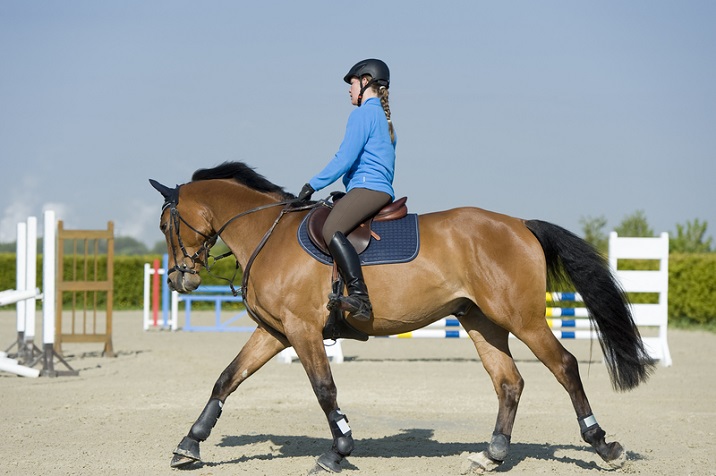
The feel of horses moving rhythm can also be developed by posting trots. The riders can lift their body up from their saddle by just using their horses stride by posting without stirrups.
Five-Five-Five Exercise
Five-Five-Five is another exercise which gives the rider the capability to pay heed to where the horses hooves are. This can be done by feeling the movement through the horses body as it moves. Here the rider needs to sit on the saddle for five strides as the horse walks, before posting for the next five strides.
At the end of the first five strides, the rider and horse stand for five more strides. This exercise should be practiced daily so that both the rider and horse are comfortable with it. Practicing these three sets of moments make the riders well aware with the rhythm of the horses stride.
Once the rider is pretty sure of being on the saddle, the final step is jogging in a circle. It begins with a trot and directs the horse in establishing a large circle. After forming the circle, tighten the circle by half and direct the horse into a jog. As the circle tightens, drop inside stirrup and maintain the balance. Once the rider feels the hang of it, they can easily change the direction and practice.
Equestrian - How to Play?
Before Mounting
Before mounting a horse, make sure that you are mounting gracefully without hurting the horse with your leg onto its rump or saddle. Align yourself correctly over the saddle and start riding with a slight touch over the rein. Do more trotting or jogging instead of cantering or lopping. Instead of artificial aids (crop or spurs), use natural aids (hand, legs, weight and voice) to give a clear cues to your horse on movements.
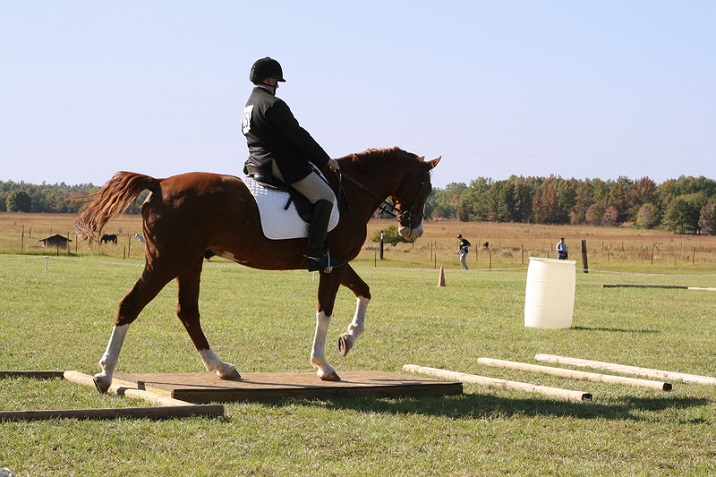
Mounting
Start with little bit of warm up then go for mounting. This is because, cold muscles of the horse require gradual warm up for smooth functioning. Therefore, before canter/lope just move along with your horse in both the direction for jogging or trotting.

Different styles of mounting have different steps but all have some common steps that need to be followed −
Take your horse to an open location and make sure your horse is at fair distance from other horses.
Check the tightness of clinch/girth.
Rein should be evenly distributed over the horse to give a firm control over him. A good rein can help you holding your horse in steady position, so that it will not move while you ride.
If the horse is feeling shy or bolt, his eyes and ears can communicate with you. So before riding, look into his face for such signs.
Use a mounting block which will help in reducing the strain on horseback while you ride on it.
Western Style of Riding
If you wish to ride the horse in western style, then follow the steps given below −
Stand on the left hand side of the horse and start evenly distributing the rein through your hands over his neck.
Now hold the rein tightly in your left hand, restricting any further movement of the horse in forward direction before mounting and after mounting it can be released a bit.
Use your peripheral vision to keep an eye on the head of your horse and face either in the same direction or to the side of his face.
Now position your left hand in front of the withers by holding tightly the saddle if possible.
Use your right hand to hold the stirrup and place your left foot in it.
Hold the saddle horn tightly and push up off the ground with your right leg.
Keep yourself in a standing position and put your whole weight on left stirrup.
Pass the right leg over the saddle without touching the horse and sit over it gently.
Position your right leg into the right stirrup and adjust the saddle along with reins.

English Style Mounting
If you are going to ride your horse in English style, then use a mounting block and follow these below steps.
Keep the stirrup irons run up while mounting on a horse saddle with an English saddle.
Place the reins over the head of your horse.
Hold the reins with your left hand by standing on the left hand side of the horse. Reins should be evenly distributed and should be short enough to hold the horse in a steady position.
Face towards the forequarters and at the withers, grasp your horses mane with your left hand.
Now its time to turn the iron stirrup towards you in a clockwise direction with your right hand.
Place your left foot into the stirrup and right hand on the off side of the saddle.
Now lean slightly forward and mount the horse with your right foot making an arc over his saddle without touching.
Now sit down gently on the saddle by adjusting your right foot into the stirrup and adjust the reins with your hands.
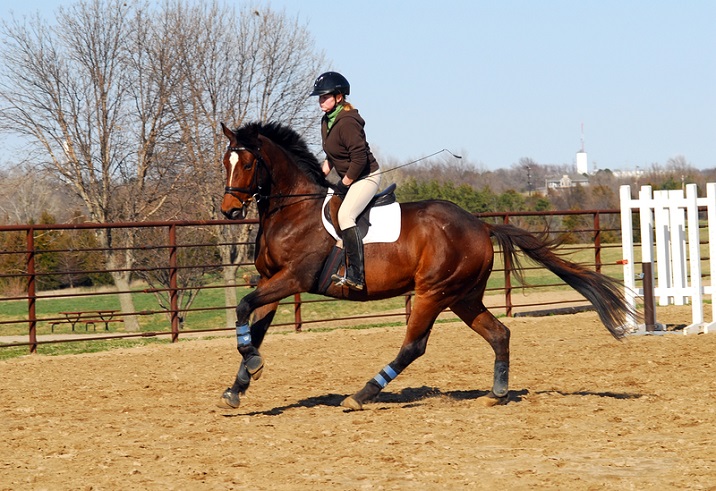
Dismounting
Before landing, always make sure that your landing area is free from any obstacles. Those who are using western style of horse riding can use any of the following two dismounting methods.
Without using your left stirrup, gently slide down from the horse.
Leave your foot in the left stirrup and step down from the horse.
The size of the rider decides the method of sliding down from the horse. For example, a person having small height should use the first method instead of second.
If you are an English rider, then without using the left stirrup slide down from the horse or else do the vaulting. Like western styles, riders do not step down from the horse directly.
Position of Body Parts while Riding
If you learn how to mount and dismount from the horse, that is not going to help you in playing equestrian. Learning about various body positions is also equally important. Below we have discussed about some basic position of your body while sitting on the horse.
Head − Do not tilt your head with respect to your shoulders, rather keep it straight and keep your eyes on the destination. Put the weight out of your heel by kneeling forward and keep your chin in up position.
Shoulders − As soon as you position yourself on the saddle, try to maintain your both shoulders at same level. If not, they may indicate that your body weight is not balanced centrally. If you lean in a direction, it will make your horse to lean in that direction too.
Back − Keep your back always in a vertical position with respect to your base. Do not keep it rigid else it will affect your performance.
Stomach and Arms − Your stomach should be flat and arms should hang naturally not rigidly. Keep them soft and relaxed. In this way, your hand will move naturally when the horse will make any movement.
Seat − Keep your hips and pelvis in relaxed position because they are the real shock absorbers. Try to distribute your body weight evenly all over the saddle. Your thighs should remain in touch with the saddle.
Legs − Through your legs, you can actually communicate with the horse effectively. Legs can balance your upper body in a equilibrium position over the saddle. Stirrups should be of shorter height than saddle so that your legs and ankles can effectively act as shock absorbers.
Foot − Most part of your body weight is carried out by your heel. So, proper positioning of the ball of your foot over the stirrup determines how you are going to use your legs. The position of your feet should be nearly parallel with the side of the horse.
Changing Direction
To change the direction, you must use your hands, legs and the reins effectively. Lets discuss some of the basics.
Turn right/left
Lets start with a procedure for turning right. Turning left will follow the similar procedure with opposite aids. Put more pressure on the right hand side of the stirrup but do not lean over the horse. Then draw the rein little back. Now there is task to turn the horse in a direction you want to. For that you first turn your head, then shoulders and then hips, so that your horse can sense the movement through you.
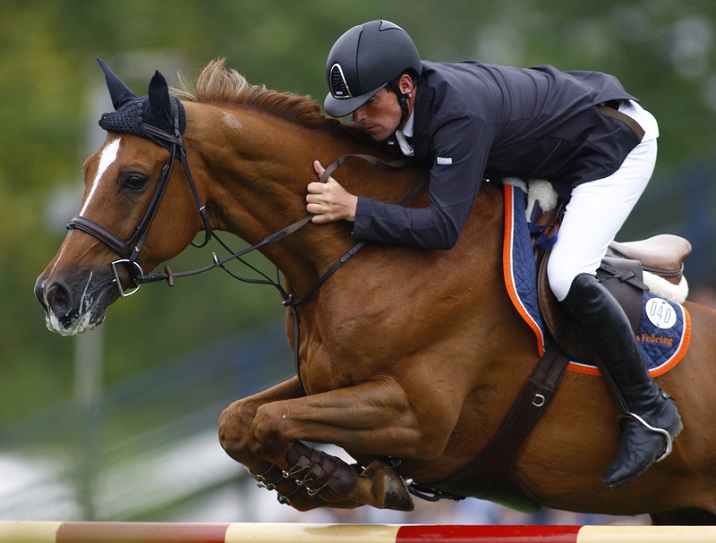
As the horse starts turning, bump his girth slightly with your outside legs so that the horse will turn around more tightly. Here the outside leg will control the impulsion and the inside leg will control the bending of his ribcage.
Riding a Circle
Making a circle requires the bending of the horse at four points and the rider should be able to see horses inside eye all around the way. The steps for circling are as follows −
When you start to move around a circle, your horse will follow his nose and will look for where he is going.
Slightly tip his nose to the arc of the circle with your inside rein.
Use your outside leg to control the movement of the horse around the circle.
Your inside leg can make him move around the arc by applying pressure on his ribcage and spine in the same direction. Bump him at his girth in between if he does not respond.
Pull your inside rein slightly up of his mane so that the shoulder of your horse will remain in upright position.
Equestrian - Rules
Rules for equestrian are decided by Federation Equestrian Internationale. Lets know the rules relating to various aspects of Equestrian.
Endurance has various phases varying from 20-40km each. The event lasts from one to five days. Phases depend on the distance that is to be covered.
After each phase, there is a compulsory break or rest time for feeding the horse. Veterinary inspections of the participating horses are also conducted during this time.
Time is the most important element that determines the winner of the sport. After each phase, players are given a time card mentioning and recording their timings. The first ten players who complete the finish line in best conditions are rewarded by the organizing committee.
The players should wear protective, securely-fastened headgear throughout the sport while on the horse. Safety stirrups are compulsion and while riding, all the players must wear footwear with heels of 12mm or more.

All the riders must be in their respective uniforms. Shorts and sandals are not allowed.
During the jumping event, all details regarding the event along with one copy must be posted at the entrance of the arena at least 30 minutes prior to the event. All barriers to be crossed have to be numbered in the order they need to be jumped.
Two flags are used for marking. All the compulsory turning points are marked with a red flag on the right side and a white flag on the left. If a rider tries to jump the barriers with their head gear incorrectly fastened, then they will be directly eliminated.
In dressage, all the rules related to the penalties and faults are very strict and the rider can be directly disqualified if the infractions made are deemed serious. Anyhow, the riders can improve their performance by listening to the judges comment.
Equestrian - Champions
The FEI World Equestrian Games are considered as the major international championships for equestrianism, and are governed by the Federation Equestre Internationale (FEI). The competitions are conducted after every four years.
Some of the important Equestrian championships that are held worldwide are as follows −
- The American World Cup
- Saratoga Classic Horse Show
- Worlds Championship Horse Show
- The AQHA World Show
- The Arabian and Half Arabian Horse Show
- The Georgia Arabian Horse Show
Equestrian is a sport of Horse Riding which consists of various events. Many participants have won medals in various championships. The description of some of them is as follows.
Reiner Klimke
Reiner Klimke was a German Equestrian who has won six golds and two bronzes in Summer Olympics. In the team events, he won golds in 1964, 1968, 1976, 1984, and 1988. In individual events, he won two bronze medals in 1968 and 1976.
He has also won six gold medals in World Championships of which two were won in individual events in 1974 and 1982 and four in team events in 1966, 1974, 1982, and 1986.
He also got success in European Championships where he won many medals. He died of heart attack at the age of 63.
Carl Hester
Carl Hester is a dressage rider from Great Britain. He started his career at a very young age and won Young Dressage Rider Championship in 1985. From 1990 onwards, he started taking part in World Championships, European Championships, and Olympics.
In 2011, he participated in European Dressage Championship in the British team and won gold medal. He also won silver in special dressage and freestyle dressage in the same championship.
Besides this, he has won four silvers and one bronze in European Championships in different years. In 2009 and 2015 European Championships, he won a silver while a bronze in 2013 in a team event.
Michael Jung
Michael Jung is a horse rider and equestrian participant from Germany who participates in eventing. He has won many medals in Olympics, World Championships, and European Championships.
In 2012 Olympics, he won a gold medal each in team and individual events. In 2010, he won a gold in individual eventing in World Equestrian Games.
In 2014, he won a gold in team eventing and silver in individual eventing. In European Championships, he has won six golds and one bronze.
David O Conner
David O Conner is an equestrian participant from United States who has participated in two Summer Olympics.
He won a silver medal in 1996 Olympics and a bronze medal in 2000 Olympics in team eventing.
He won a silver medal in individual eventing and a gold medal in team eventing in 1999 Pan American Games.
In 2002 World Equestrian Games, he won a gold in team event. He retired from the team in 2004 and became coach for the US team.
Mark Todd
Mark Todd is an equestrian participant from New Zealand who has won two gold medals in Badminton Horse Trials in Olympics four times and Burghley Horse Trials five times.
He also won gold medals in World Championships while being a member of New Zealand team.
At the starting of his career, he took part in first three-day eventing in a World Championship and got 10th Position. In 1980, he won Badminton Horse Trials. After this, Todd won medals in 1984 and 1988 Olympics.
Charlotte Dujardin
Charlotte Dujardin is a dressage rider from Great Britain and is considered as the most successful rider who has won many major titles and has set many world records. The titles that she has won include Individual Olympic Freestyle and World Freestyle.
Along with it, she has also won World Cup individual dressage and European Freestyle. She was fond of riding from childhood and she has won Horse of the year four times till the age of 16.
In 2007, she got some coaching with Carl Hester for dressage riding. She has won two golds in 2012 Olympics one as an individual and other in a team.
Anky van Grunsven
Anky van Grunsven is a dressage champion from Netherlands who has won many medals in Olympics.
She has the record of winning medals in three consecutive Olympic Games.
Apart from this, she has also won many medals in World Equestrian Games. Between the year 1995 and 2008, she has won the World Cup nine times.
In European Dressage Championship, she has won eight team medals and seven individual medals. After taking part in 2012 Olympics, she retired in 2013.
Isabell Werth
Isabell Werth is a German dressage rider who has won eight medals in Olympics. In 1992 Olympics, she won a gold in team dressage event and a silver in individual dressage event.
In 1996 Olympics, she won one gold each in team and individual dressage events. In 2000 and 2008 Olympics she won a gold in team and a silver in individual dressage events.
In World Championships, she has won seven golds and two bronzes while in European Championships, she has won nine golds, three silvers, and two bronzes.
Nicole Uphoff
Nicole Uphoff is an Equestrian from Germany who has won four Gold medals in Olympics. Besides this, she has also won medals in World Equestrian Games and European Dressage Championships.
She started her riding career in 1985. In 1987, she started taking part in international championships with her coach Uwe Schulten Baumer. She won a two golds, one in team dressage and one in individual dressage events in 1988 and 1992 Olympics.
In European Championships, she has won six golds and one silver while in World Championships, she has won three golds and one silver.